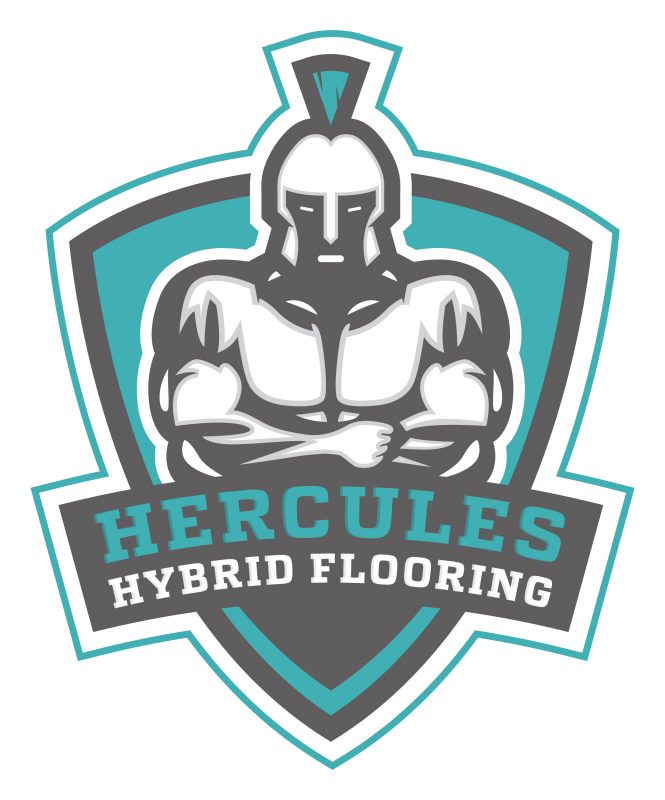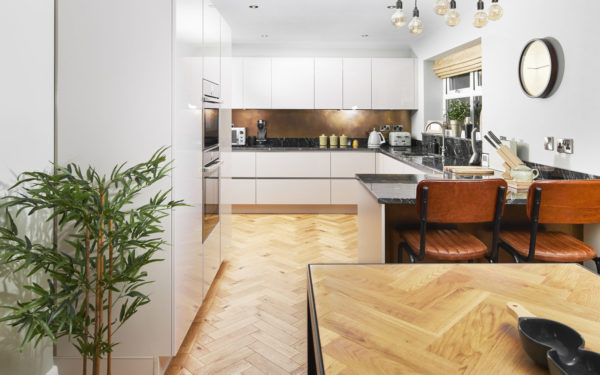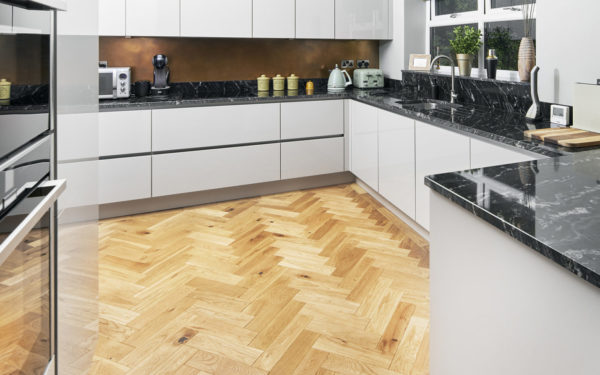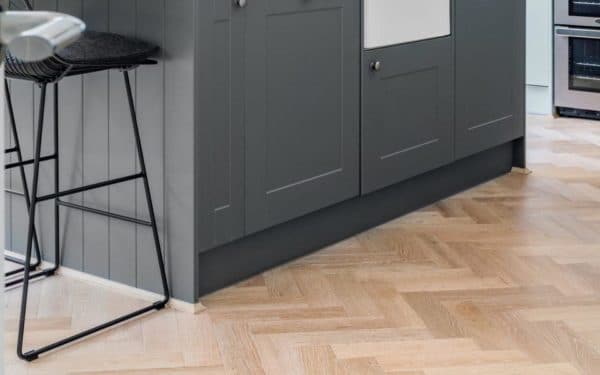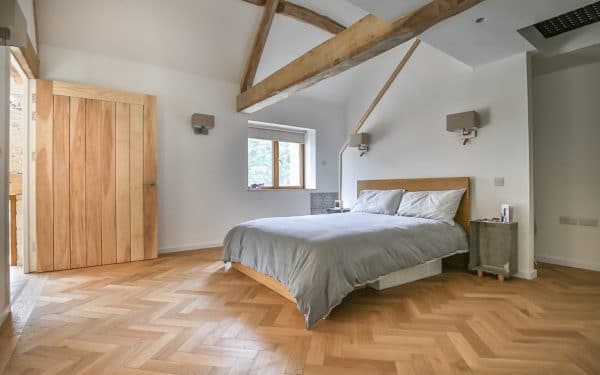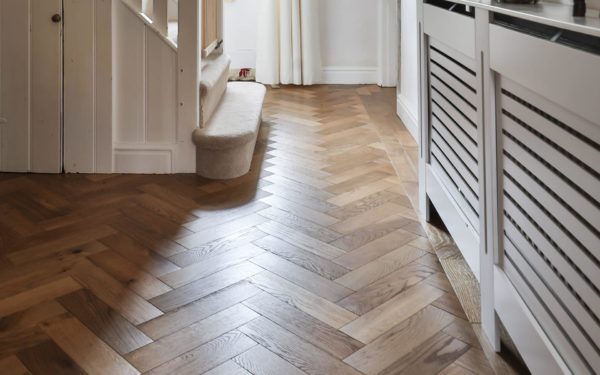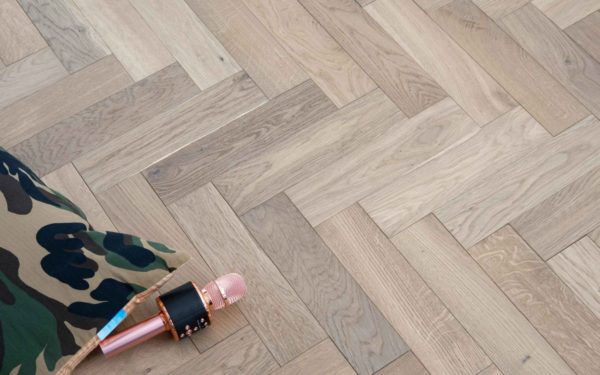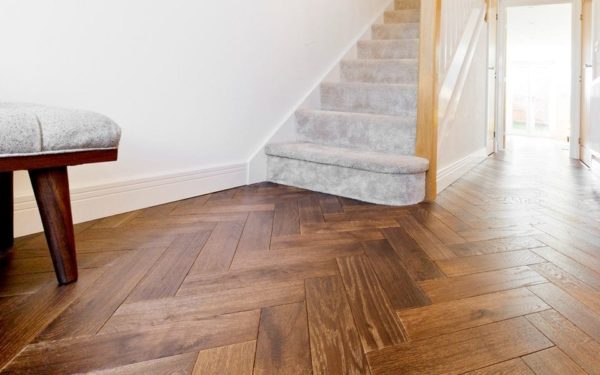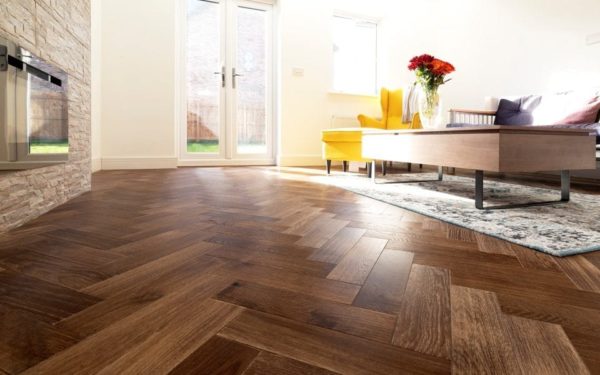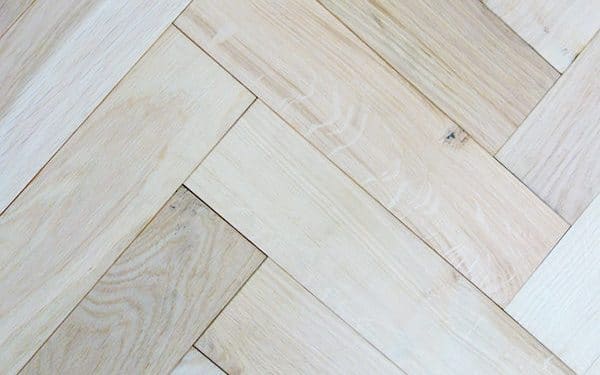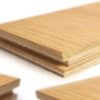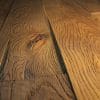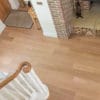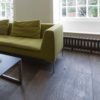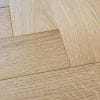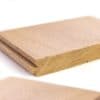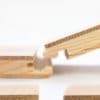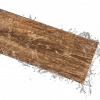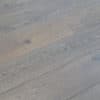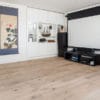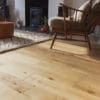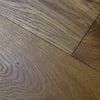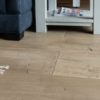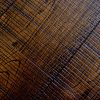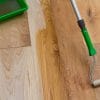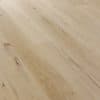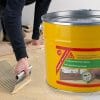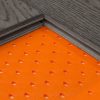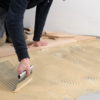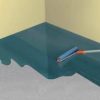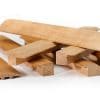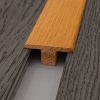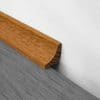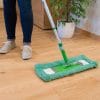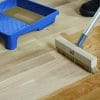V4 Zigzag Parquet by V4 Wood Flooring provides a beautiful collection of oak parquet blocks, pre-finished for an instant parquet floor in herringbone and other traditional patterns.
V4 Zigzag Flooring
Zigzag Flooring, designer parquet by V4 Wood Flooring provides a beautiful collection of oak parquet blocks, pre-finished for an instant parquet floor in herringbone and other traditional patterns.These come with a micro bevel profile to all four sides allowing for versatile installations which allow for adhesive bonding to any surface including those with underfloor heating systems embedded within the screed.
Made from European Oak, V4 Zigzag Parquet is a popular modern take on the traditional parquet floors of old. It features the latest colour tones pre-finished in the factory for easy & quick installation and a superior hardwax oil finish.
For the traditionalist, the ZigZag collection also offers a natural golden oak parquet floor in hardwax oil and brushed & matt lacquered finish. These give an instant golden oak herringbone floor without the mess and extra on site work involved in installing a traditional solid oak parquet blocks that must be sanded & sealed on site.
There is even an an Oak Unfinished ZigZag engineered floor with bevel edge perfect for those with the vision, creativity and desire for their own custom parquet wood floor. Oakwoods Tip: Finish an unfinished ZigZag floor with Osmo Polyx Oil Raw for a pale natural oak look.
Can I get a free sample?
Yes! Oakwoods offer up to five samples completely free of charge. Click the ‘Order Sample’ button on any of the Zigzag product pages to add a free sample to your basket.
How much is V4 Zigzag?
V4 Zigzag are high-quality Herringbone floors and prices vary from project to project. In order to get our very best price for your project, press the ‘Quick Quote’ button on any of the product pages and share a few basic details with us. We’ll then get back to you with a price within 20 minutes.
How long does delivery take?
As long as your chosen floor is in stock, we can deliver to mainland UK within 48 hours or any weekday of your choosing after that. Saturday deliveries are also available, please contact us to find out more.
How do you install V4 Zigzag Herringbone?
Engineered Parquet must be fully bonded to your subfloor be it wood, concrete or any other substrate. It cannot be floated on an underlay.
How to Install V4 Zigzag Flooring
Step 1 – Before Your Flooring Arrives
Relative Humidity Must Be Correct
The Relative Humidity (RH) which is a measurement of how much moisture is present in the air. The correct RH of a room’s atmosphere, for wood flooring to be installed, falls between 45-65% with an ambient temperature between 18 to 24°C. If necessary employ a dehumidifier to maintain suitable conditions. NOTE: Wood Floors are generally not suitable for bathrooms where there is regular running water or an accumulation of water vapour.Wet Trades & Decorating Should Be Dry
All wet trades such as concreting, screening and plastering should be completed and the building should be thoroughly dried out. Wood is a hygroscopic material and will absorb any excessive moisture which can cause problems. NOTE: Plaster may take several months to dry satisfactorily and concrete screeds depending on thickness may take considerably longer. As a rule of thumb drying time for cement and water based screed is one day per millimetre for the first 50 mm and unto 2.5 days for each subsequent millimetre. IMPORTANT: As with all screeds please consult the manufacturer for precise drying times and accelerated drying with heat should be avoided as this may weaken the screed. Decorating should be completed where possible, and paint should be completely dry as this can also add moisture to the room. Any sanding should be done before the floor is laid as fine dust can permeate into the wood and can be impossible to remove without damaging the surface.Room Temperature Must Be Just Right
Room Temperature will have an effect on relative humidity and should be stable before your flooring is delivered to site. Heating including underfloor heating should be fully tested and working for at least two weeks before the flooring is laid. Room temperature should be between 18 to 24°C.Direct Heat Sources Must Be Insulated
Flooring must not be exposed to excess heat such as from hot water pipes below floors.Step 2 – Preparing The Subfloor
Subfloor Preparation
The subfloor is key to a successful installation and will help ensure your floor performs to its very best. The subfloor is likely to be either wooden or a cement based screed. Sweep and vacuum to remove any dust and debris, Any decorators dust should be removed as this can be very abrasive and hard if not impossible to remove from the surface of a floor without drastic sanding and resealing. Existing floor coverings should be removed, this includes carpets, underlays, parquet blocks, ceramic tiles and any adhesive residues should be removed. It is important to do this so the subfloor can be verified as stable.Subfloors Should Be Level
The subfloor must be free from excessive undulation and flat to within 3 millimetres over 2 lineal metres across the whole floor area. This means a maximum 3 mm gap under a 2 m long straight edge, at any point across the subfloor. Failure to keep to these tolerances may result in squeaking or deflection which may produce undue stresses on the joints, cause gaps between flooring elements and with fully bonded floors may result in inadequate contact between flooring and adhesive.Subfloors Should Be Structurally Sound
Wood Flooring should only be laid on a subfloor which is structurally sound and free from movement. To prevent movement wooden subfloors must be of load bearing strength and free from deflection under loading. Suspended wooden subfloors should typically consist of a suitable board of 22 mm thickness on joist or battens at 600 mm centres or 18 mm thickness on 400 mm centres. For other types of suspended floor please check with the manufacturer.Moisture Content Of Wooden Subfloors
Wooden sub-floors should contain no more than 11% moisture content and must not be more than 2% higher in moisture than the Wood Flooring. When installing wood flooring at ground floor level (or below) above a ventilated cavity (e.g. floorboards suspended on joist), it is essential that a purpose made moisture barrier building paper is installed over the sub-floor before flooring can be installed. The moisture barrier must taken up the walls by 30 mm at the perimeter, and all joints overlapped by a minimum 200 mm and taped with a water proof jointing tape.Moisture Condition Of Concrete Subfloors
Concrete slabs and sand-cement screeds must be sound, dry, free of laitance and other substances which may impair adhesion (e.g. Bitumen adhesive residues etc). Mineral based sub-floors must be less than 75% equilibrium relative humidity and less than 65% relative humidity for glue down of engineered flooring. Anhydrite screeds must be less than 0.3% actual moisture content. Sub-floors at ground level or below must contain an effective damp proof membrane to protect flooring from ground water in compliance with British Standards. If there is any doubt that the sub-floor meets the required standard for moisture or the sub-floor does not have an effective integral damp proof membrane, a suitable surface applied damp proof membrane must be installed.Step 3 – Once Your Floor Arrives
Acclimatisation
Acclimatising is used to balance the wood flooring with the environment it is going to be used in. Once you are satisfied that the correct preparations have been made, your floor can be delivered and as part of your guarantee conditions, it is essential to acclimatise your flooring prior to installation. Your floor should be kept in it’s sealed, unopened boxes and should only be laid flat, ideally in the room in which it is to be installed or as close to typical living conditions as possible. IMPORTANT NOTE: Do not store packs outside or anywhere with different ambient conditions to the rooms where it is to be installed. If your flooring is not correctly acclimatised planks can warp and bow and become difficult or impossible to install. Engineered wood floors should acclimatise for at least 3 days and solid floors should have at least 7 days. Note: A certain amount of bowing in engineered floors is common and if the bowing is no more than 25 mm then these boards can be installed and will lay flat with a random staggered laying pattern. NOTE: V4 Wood Flooring should be acclimatised in it’s sealed packaging. As the packs are not airtight and allow the wood to breath whilst supporting the boards so that they do not warp.Step 4 – Planning The Installation
Type Of Installation
Engineered floors can be installed as floating floors over Wood’s Good underlay or fully bonded using Wood’s Good Flexible MS adhesives. 18 -20 mm floors may be fixed to wooden subfloors using secret nails.Direction Of Floor
Where practical install floor parallel to the longest walls so that the direction of greatest potential expansion (i.e. across the width and grain) does not coincide with the direction of greatest dimension of the floor, especially in large areas. Before you install the first row measure the width of the room and divide this measurement by the width of the board, this will give you the number of rows of boards. This is useful as the last row should not be less then 60 mm. If it is then the first down should be rip cut along the length to make the last row wider.When Your Are Ready To Lay – Check For Defects
Check each board before it is installed for possible damage or defects, this is important as installed defects are the responsibility of the installer as the installer is the last line of quality control.The Installer Is The Last Line Of Quality Control
Samples must be taken as a guide only and colour/shade and other characteristics will vary. Before installation commences rack out a small section of boards for the client approval. The installer is the last line of quality control. This product may include up to 3-5% of boards which do not meet the normal tolerances or grade. NOTE: The installer is the last line of quality control. DO NOT INSTALL BOARDS WITH OBVIOUS DEFECTS.Wastage
Wood flooring should always be over ordered by 10% of the actual area required. This allows for wastage material which may include boards with natural blemishes or filled knots that are within the grading tolerance but are not your taste. It is also good practise to keep at least a pack of flooring stored in case flooring from the same batch is required for any unforeseen repair work.Randomised Installation
To achieve the desired mix of colours, shades and other characteristics in the final floor, and to avoid clusters of characteristics such as knots, the contents of multiple packs should be mixed during installation. Avoid Grouping similar colours and grain pattern By not mixing the planks before installation areas of dark and light planks can look patchy and out of place.Laying Pattern
For installation of flooring planks which run in the same direction, header-joints must be staggered by a minimum of two board widths apart. It is also important to even patterns across the floor as this can cause dimensional weaknesses as the floor expands and contracts.Correct Staggered Laying Pattern
Header joints should be staggered by length equivalent to at least two boards width. This random stagger will stabilise the floor and limit any dimensional movement as the wood naturally expands and contracts.Incorrect Pattern – Header Joints Are Too Close
The header joints are too close in this pattern and will cause a line of weakness in the floor which could open up as the floor expands and contacts.Incorrect Pattern – Header Joints Lined Up Across The Floor
Avoid this type of ‘H’ pattern where header joints line up as it will lead to weak points in the floor where parallel boards may warp and cause an accumulation of excessive movement.Step 5 – Floating Installation
Engineered wood flooring may be installed as a floating floor, which means that the boards are joined together and loose laid over the subfloor,, instead of being fully bonded with adhesive or secret nailed. This is achieved firstly by laying a 3mm or thicker purpose made underlay at 90° to the planned direction of the flooring, then laying the flooring and bonding the interlocking boards at the tongue and groove joints with a D3 grade moisture resistance PVAC adhesive.PVAC Adhesive Application
When bonding tongue & groove parquet PVAC adhesive should be applied evenly with a continuous bead, along the top of the grooved joint. The following panel (tongue) should be firmly pressed in to the groove to ensure a tight fit. A wooden block can be used to assist and to prevent damage to the tongue. If extra strength is required PVAC adhesive should be applied evenly to both top and bottom of the groove. Do not inject adhesive into the base of the of the groove (e.g. as the groove edge of the boards face upward vertically) as this may prevent the tongue and groove joints from closing. NOTE: Its is strongly recommended that both header and length joints be bonded with PVAC and NEVER spot glue, to avoid weakness and potential gapping as the floor naturally expands and contracts.Underlay & Damp Proofing
It is strongly recommended that a purpose made impermeable moisture barrier is used below floating wood floors. The moisture membrane may be used in the form of 1000 gauge polythene damp proof membrane for concrete which is laid over the sub-floor before the underlay, then flooring is laid. Alternatively an underlay which incorporates a moisture resistant barrier may be used. In either case the moisture membrane is taken vertically up the wall and trimmed off above the finished level of the wood floor surface. All moisture barriers must be taped at the joins with a purpose made jointing tape. Polythene damp proof membranes are overlapped by 200 mm or greater before joins are taped.Floated Installation – Important Notes
- L-shaped halls are better suited to fully bonded installation than floating.
- If installing as a floating floor in L-shaped areas, in commercial use, or over under floor heating ensure that the joints are double bonded with adhesive applied to the upper and lower portion of the groove.
- Where necessary use flooring straps to achieve closed joints.
- Flooring must not be exposed to artificial heat sources such as from heated pipes at shallow depth below screeds, or suspended pipes below floorboards. Pipes must be thoroughly insulated.
Provision For Expansion – Important Note
Wood flooring is affected by seasonal climactic changes and will expand and contract, so it is important to allow room for this expansion. Expansion spaces of minimum 12mm for floors less than 25m2 or minimum 15 mm for larger areas must be left wherever the floors meets obstructions including all walls, door frames, thresholds, structural support, fireplaces etc. These expansion gaps can be covered using the skirting, or edge trim (e.g. Scotia, Quadrant). It is recommended that an expansion break is always employed where rooms join. T- Bar threshold strips can be used for this purpose. Alternatively where wood floors meet other floor coverings a suitable Reducer threshold strip may be used.Step 6 – Fully Bonded Installation
Engineered wood flooring may be installed direct to concrete or sandcement screed sub-floors, or to suitable wood based sub-floors (e.g. Plywood, OSB) by fully-bonding with a purpose made permanently flexible adhesive (e.g. 1 component Polyurethane or SMP). Wood’s Good MS and MS Plus floor adhesive is fully tested with all V4 Wood Flooring products and is recommended. The adhesive is applied to the sub-floor only using a V-notched trowel, which creates ridges of adhesive which the flooring is bedded into when laid. Always use the trowel type which is recommended by the manufacturer of the flooring adhesive for the type of wood flooring being installed and replace worn trowels.Fully Bonding – Important Notes
- When installing flooring uplift occasional boards after placement and examine the residues of adhesive on the underside of the board to ensue the board is making full with the bed of adhesive.
- For UFH hot water system embedded into concrete full bond is recommended as it improves the TOG rating.
- Previous floor coverings and the adhesive residues used to adhere floor coverings to sub-floors must be removed before bonding of wood flooring.
- Ensure screeds are of adequate cohesion strength of before installation.
- Avoid accelerated drying of new screeds as this can lead to poor cohesive strength, especially over under floor heating.
- Always check the recommendations of the applicable adhesive manufacturer, esp. regarding other sub-floors. e.g. asphalt, anhydrite etc.
- Some chipboard products have a moisture resistant treatment which can seriously impair adhesion. A layer of plywood may be laid over and securely fixed to the chipboard before installation may commence.
- Any residues of MS type adhesives which come into contact with the face of the board must be removed whilst wet, as cured residues are not removable.
- Concrete slabs if fully bonding down engineered flooring must be <65% relative humidity. Testing of subfloors must comply with BS8201 Code of practice for wood based products & BS 8204 Screeds, bases and in situ flooring.
Provision For Expansion – Important Note
Even fully bonded wood flooring is affected by seasonal climactic changes and will expand and contract, so it is important to allow room for this expansion. Expansion spaces of minimum 12mm for floors less than 25m2 or minimum 15 mm for larger areas must be left wherever the floors meets obstructions including all walls, door frames, thresholds, structural support, fireplaces etc. These expansion gaps can be covered using the skirting, or edge trim (e.g. Scotia, Quadrant). It is recommended that an expansion break is always employed where rooms join. T- Bar threshold strips can be used for this purpose. Alternatively where wood floors meet other floor coverings a suitable Reducer threshold strip may be used.This guide will give you basic advice on how to layout and install Zigzag engineered parquet blocks in a herringbone pattern. It is important to first read and understand the Hardwood Flooring Installation guide.
V4 Zigzag is a bevel edged engineered parquet block which does not require sanding and filling like traditional solid parquet blocks. Once the sub floor has been correctly prepared and is fully level, dry and primed, Zigzag can be installed using the correct flooring adhesive. We recommend Wood’s Good MS Plus Adhesive which provides excellent grab and is fully tested with Zigzag.
Zigzag can be installed in many different patterns as the blocks are universal(not left and right) as they have one tongue and 3 grooves. Please note that some patterns will require false tongues to ensure a stable installation.
For Herringbone styles where the blocks overlap side and header joints, false tongues are not required.
Step 1 – Prepare For the Installation
The site conditions and subfloor are prepared and the flooring has been fully acclimatised as per the V4 Hardwood Flooring Installation guide.Step 2 – Setting The First Row
It is important to be precise with a herringbone installation so ensuring the first row is correctly positioned and square is key. The following method makes layout simple using a perfect square template to set the first row. Ensure the square template is screwed to the subfloor so it can be easily removed once the first row is set. Once correctly positioned the square template will give a solid start point making it easier to move the blocks into position without gaps opening up.- Plan the direction of the herringbone pattern, usually this will follow the length of the room.
- Find the centre of the room and use a plumb line to mark out a centre line. The apex of the first row of blocks will run along this line. Note: If the centre line is used to align the square template then the row apex will be offset by the depth of the tongue which is approximately 5 mm. If total accuracy is required then first find the room’s centre line and then mark an offset guide line 5 mm to it’s right and use this line to place the square template. The template should have sides equal to, or greater than the length of the blocks.
- Starting close to the wall place the square template so that the offset guide line bisects square diagonally from opposite angles. Once positioned screw the template to the subfloor.
- Working from this template will ensure the first row’s apex follows the centre line.
- Standing on or behind the square template, apply Wood’s Good MS Plus adhesive with a Wood’s Good Trowel to the area in front of the square. Note: It is good practise to loose lay the first row to make sure you are happy with the orientation guide line and placement of the square template. Tip: It is also important to mix the blocks to ensure an even distribution of grade, grain and colour variation across the finished floor
- As per the diagram below, place block 1, with tongue against the left hand side of the square template so that the leading header is in line with the right hand edge of the square template
- Place block 2 with tongue facing away so that the grooved edge is pressed against both the header joint of block 1 and the righthand side of the square template.
- Repeat points 6 & 7 placing blocks onto the bed of adhesive ensuring that they connect, the leading corner of the herringbone pattern should be positioned over the centre line which is 5 mm left of the guide line. Tip: Use a hammer and tapping block to push the blocks together, occasionally lift a block and check the adhesive has full coverage.
- Once the first row has reached the opposite end of the room or the finish point, use a tapping block and hammer to make any adjustments while the adhesive is still wet and remove any adhesive which has not been covered. Important Tip: Remove any adhesive spills from the face of the blocks while it is wet with a damp cloth before the adhesive sets. Allow the adhesive to fully cure and this row will form a fixed point template for subsequent rows.

Step 3 – Complete the Installation (refer to the diagram below)
- Working off the first row, loose lay the second row placing checking that that the apex of the second row is parallel to the centre line.
- Once you are happy to install, apply adhesive to the area adjacent to the first row.
- Starting at the ‘End Wall’, install the first half of the second row in two halves. The first block(19) should be placed so that the long grooved edge is pressed against the header joint from the last block in the first row (18) and the header joint groove connects with the next section of exposed tongue the next block(16) in the first row. Repeat this process with the first half the second row until the square template is reached.
- Once the first half of the second row is in place there is no need to wait for the adhesive to set. The second half of the second row is installed. Beginning at the ‘Start Wall’ place the next block(28) so that the long grooved edge is pressed against the header joint of the last block (27) and the grooved header joint connect with the exposed tongue of the next block(26)
- Repeat this process to fill both sides of the first row cutting blocks to fit the perimeter of the room so that adequate expansion gap is maintained which can then be covered by skirting or moulding.
- A border may be installed using a plunge saw to cut away the blocks to make the required space. A groove can then be machined into the cut edge so that blocks can be joined.

Wood Flooring & Underfloor Heating
Do…
- Avoid accelerated drying of new concrete/screeds over UFH as this may lead to poor cohesive strength of the sub-floor.
- Check the cohesive strength of screeds before adhering.
- Ensure that screeds, concrete, etc are < 65% RH before installation commences.
- Employ a suitable surface applied moisture barrier (e.g. moisture suppressant primer) where necessary.
- If levelling is required above a suitable primer moisture barrier, apply a purpose-made fine graded aggregate over the second coat (on one coat membranes) OR third coat (on two coat membranes) immediately after application. Allow to cure then vacuum off all loose aggregate; (This will aid adhesion between primer and levelling compound). Then use a rapid dry formulae‚ water-mix (i.e. instead of latex mix) levelling compound, as these are typically stronger and develop strength quicker.
- Ensure that levelling compounds are fully cured and dry before installation commences (see manufacturers technical data-sheets).
- Use a purpose made, permanently flexible adhesive such as 1-part polyurethane, or Silicon Modi ed Polymer, when adhesive fixing.
- Fully-bond, rather than use, liquid battens‚ type adhesive systems with UFH.
- Ensure full contact between the underside of the flooring element and adhesive.
- Maintain suitable ambient humidity 45 to 65% RH. (Monitor with a domestic hygrometer).
- Employ floor temperature sensors below the floor with electric under floor heating systems.
- With wet systems, zoning is recommended so the flow temperature can be controlled for the floor.
Do not…
- Do not use solid flooring, V4 Woodflooring does not recommend solid wood floorings for UFH applications or high movement hardwood species such as Beech and Maple.
- Do not allow humidity below 45% RH, or above 65% RH. (A small domestic humidification unit can be employed to avoid low humidity during the winter heating cycle if necessary.
- Do not allow the floor temperature to exceed 27°C, (including under rugs).
- Do not use thick insulating rugs. (Note: as this will lead to high floor temperatures).
Selection of species for use with underfloor heating
Selection of species for use in floors subject to underfloor heating should be limited to those with particularly small thermal and moisture movement or should be as recommended by manufacturers who have extensive experience in the supply of flooring to be used over underfloor heating. Construction which permits an air space directly under the floor should be avoided as this can cause undesirable temperature fluctuations but advice on this should be taken from the manufacturers of the underfloor heating.Precautions prior to installation where underfloor heating is to be used
Before floor laying begins, the following procedure should be followed: The screed should be dried in accordance with BS8201:2011. Once the screed is dry to a maximum level of <75% RH, or <65% RH for floors directly bonded to the screed, the underfloor heating should be commissioned in accordance with the underfloor heating manufacturers guidelines where available.- Do not commission the UFH for 48 hours after the installation is complete. This gives the adhesive time to fully cure and allows the floor to generally settle.
- Do not turn the system straight up to maximum. Gradually increase the temperature 1°C per day until you reach your optimum operating temperature. And never exceed 27°C at the surface temperature.
Testing of UFH services
The flooring installer should ensure that all services (not only heating services) running beneath the floor have been tested fully by the services installer before laying starts.Provision for expansion
- As a guide allow a minimum 12mm expansion wherever the floor meets obstacles including perimeters walls, structural supports, hearths etc.
- Create additional expansion breaks in doorways using suitable profiles such as T-section thresholds or other transition strips.
- Create additional expansion breaks in large floors.
- Where practical install flooring parallel to the longest walls so that the direction of greatest potential expansion (i.e. across the grain) does not coincide with the direction of greatest dimension, esp. in large floors.
- The precise combined provision for expansion must be judged by the installer taking into account environmental humidity, moisture content of wood at time of installation, timber species and size of the floor.
Precautions prior to handover
Means of keeping the flooring dry and stable in the period between laying and handing over should be provided.Start up schedule
Where underfloor heating is involved, particular attention should be paid to ensure that the top surface temperature of the wood flooring should not exceed 27°C. Some electrical underfloor heating systems are not compatible with timber flooring and the manufacturer of the timber flooring should always be consulted before installing over underfloor heating systems, particularly regarding the moisture content, species of the timber and specific installation guidelines. It is most important that electrical UFH systems must be overlaid with a fibre reinforced smoothing compound of not less than 5mm. No direct contact of any electrical matting should come into contact with the wood floor itself. Please seek the advice of the UFH manufacturer’s instructions to confirm compatibility with wood flooring.- Do not commission the UFH for 48 hours after the installation is complete. This gives the adhesive time to fully cure and allows the floor to generally settle.
- Do not turn the system straight up to maximum. Gradually increase the temperature 1°C per day until you reach your optimum operating temperature. And never exceed 27°C at the surface temperature.
Important notes
Always check the mutual compatibility of moisture barriers, primers, aggregates, levelling compounds and adhesives before installation.Using Underfloor Heating With Your Wood Floor
- Do not allow humidity below 45% RH, or above 65% RH. (A small domestic humidification unit can be employed to avoid low humidity during the winter heating cycle if necessary).
- Do not allow the floor temperature to exceed 27°C, (including under rugs).
- Avoid thick insulating rugs. (Note: as this will lead to high floor temperatures).
- Do not commission the UFH for 48 hours after the installation is complete. This gives the adhesive time to fully cure and allows the floor to generally settle.
- Do not turn the system straight up to maximum. Gradually increase the temperature 1°C per day until you reach your optimum operating temperature. And never exceed 27°C at the surface temperature. We strongly recommend a dual thermostat system is used to monitor the surface temperature and the ambient temperature of the room.
- Do not turn the heating on or off suddenly. Throughout the life of the flooring avoid any rapid or big temperature changes as fluctuating the heat within the product runs the risk of drying out the timber. This can result in dimensional changes causing the floor to split and crack. Where underfloor heating is involved, particular attention should be paid to ensure that the top surface temperature of the wood flooring should not exceed 27°C.








